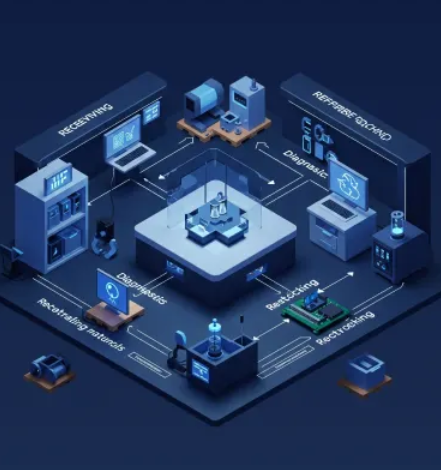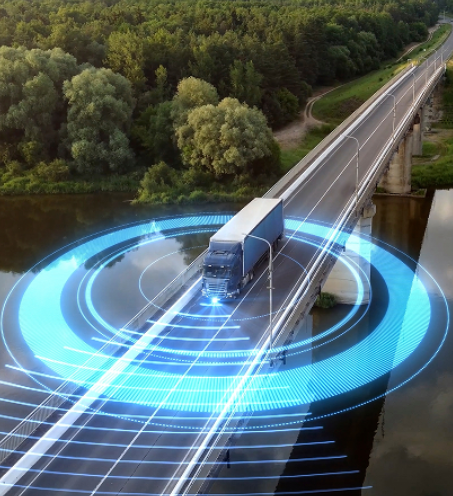Unlocking the Potential of Reverse Logistics: AI-Driven Solutions for Reselling Returned Products

The process of reverse logistics, where products are returned from consumers back to manufacturers or suppliers, plays a crucial role in modern supply chains. With rising consumer expectations, growing environmental concerns, and the need for businesses to manage returns more efficiently, reverse logistics has become a vital part of logistics operations. As businesses continue to focus on improving customer satisfaction and sustainability, AI technologies are stepping in to streamline and optimize reverse logistics processes. Here’s how AI is reshaping the way companies handle returned products and resell them for maximum profitability.
The Growing Importance of Reverse Logistics
Reverse logistics involves managing returned goods, exchanges, recycling, and disposal, and it is becoming an increasingly important part of logistics. The push for sustainability, better customer service, and reduced costs are some of the key drivers behind this trend. With customers now expecting hassle-free returns, businesses must have efficient systems in place to handle product returns swiftly and profitably. However, these returns often create significant logistical challenges, particularly in terms of inventory management, restocking, and the resale of returned items.
This is where AI comes into play, revolutionizing reverse logistics by automating tasks, optimizing resources, and providing businesses with better insights into the returns process. By harnessing AI, companies can reduce costs, improve the efficiency of their returns processes, and even turn returned products into valuable revenue streams.
Key AI Solutions in Reverse Logistics
AI is being leveraged in a variety of ways to improve reverse logistics, from streamlining inventory management to optimizing pricing strategies. Here are some of the innovative AI solutions that are transforming how businesses handle returns:
1. Predictive Analytics for Returns Management
AI’s ability to analyze historical data and predict future trends is one of its most powerful applications in reverse logistics. By using predictive analytics, businesses can forecast return rates based on factors like product type, customer behavior, and seasonal trends. This predictive power allows companies to prepare for expected return volumes by allocating the right resources, ensuring that they have the necessary staff, warehouse space, and transportation for processing returns efficiently.
AI can also help businesses reduce the impact of returns by anticipating customer preferences and trends. For example, if certain products have a high return rate due to fit or quality issues, predictive analytics can help the company adjust its inventory or make changes to the product offerings, minimizing returns.
2. Automating Returns Processing
The returns process can be time-consuming, especially when it involves manually sorting, inspecting, and restocking products. AI-powered automation systems can drastically speed up this process. By using machine learning and natural language processing (NLP), AI systems can automatically handle return requests, verify product eligibility, and initiate the return process without human intervention.
Furthermore, AI can assist in automating the categorization of returned products based on their condition. Items in good condition can be quickly routed for resale or restocking, while damaged goods can be sent for refurbishment or recycling, ensuring the efficient use of resources.
3. Personalized Recommendations and Virtual Try-Ons
AI isn’t just about processing returns efficiently; it also plays a key role in reducing return rates in the first place. Personalized recommendation engines, driven by AI, help guide customers to products that suit their preferences, reducing the likelihood of returns. AI analyzes customer browsing and purchasing behavior to suggest products that are more likely to meet their needs, thus reducing the chances of dissatisfaction and returns.
Additionally, virtual try-ons using augmented reality (AR) allow customers to visualize how products like clothing, shoes, or accessories would look on them before they purchase. This technology enhances the shopping experience, helps customers make more informed purchasing decisions, and significantly lowers return rates, which in turn reduces the burden on reverse logistics.
4. Dynamic Pricing for Reselling Returned Products
One of the most effective ways AI is helping reverse logistics is by implementing dynamic pricing for returned products. AI algorithms adjust the resale price of returned items in real-time, considering factors like product condition, demand, and market trends. If a returned item is still in high demand and in excellent condition, the algorithm may increase its resale price. Conversely, if the product is in lower demand or has minor defects, the price may be adjusted accordingly to encourage a faster sale.
This dynamic pricing strategy ensures that companies can recover more value from returned items, turning what could be a financial loss into a profitable opportunity. By pricing items according to their condition and demand, businesses can optimize their profit margins and reduce the time products spend in inventory.
Benefits of AI in Reverse Logistics
The integration of AI into reverse logistics offers several key benefits:
- Increased Efficiency: AI automates various stages of the returns process, from sorting and categorizing to routing and reselling, which results in faster processing times and reduced manual labor.
- Cost Reduction: By predicting return rates, optimizing inventory, and implementing dynamic pricing, AI helps companies lower costs associated with storage, transportation, and labor. Furthermore, it can reduce the financial impact of returns and minimize the need for excessive restocking.
- Improved Customer Satisfaction: AI tools like personalized recommendations and virtual try-ons enhance the customer shopping experience, reducing the likelihood of returns. In addition, faster processing of returns leads to quicker exchanges, refunds, or replacements, improving overall customer satisfaction and loyalty.
- Sustainability: Fewer returns mean less transportation, handling, and waste, contributing to more sustainable practices. By optimizing the resale of returned goods, companies can reduce waste and support recycling or refurbishment efforts.
Conclusion
AI is transforming reverse logistics by providing businesses with the tools they need to optimize their returns processes and turn returned products into valuable revenue opportunities. From predictive analytics and returns automation to dynamic pricing and personalized shopping experiences, AI-driven solutions are enhancing efficiency, reducing costs, and improving customer satisfaction. As e-commerce continues to grow, integrating AI into reverse logistics will be essential for businesses that aim to stay competitive, reduce their environmental impact, and meet rising customer expectations. Embracing these technologies will allow businesses to streamline their reverse logistics operations and maximize the profitability of returned products.




